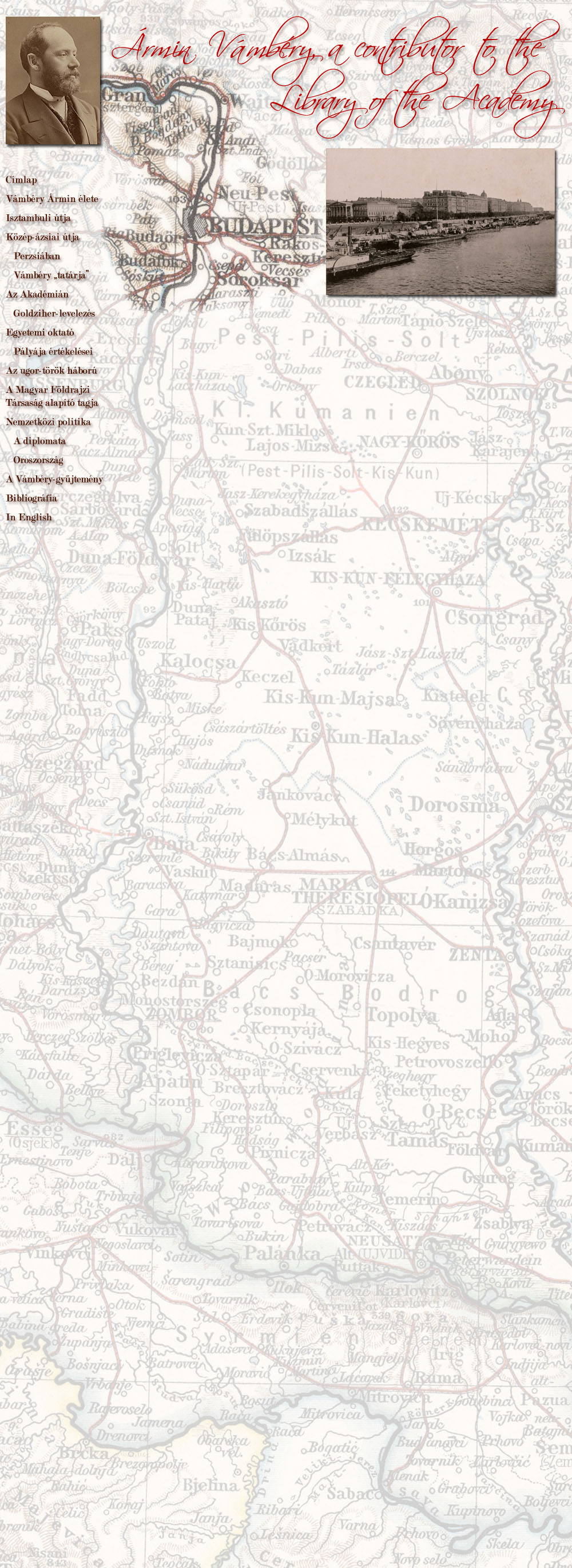The most valuable part of the legacy of the renowned Orientalist scholar is preserved today in the Eastern Collection of the Library of the Hungarian Academy of Sciences. 1 As Vámbéry’s work and questions determined the way of development of Hungarian Turcology, which would have not arrived at its present character without them, so the manuscript treasure of the Eastern Collection, the fundamental library of Hungarian Orientalist research also would be incomparably poorer without Vámbéry’s efforts and acquisition activity.
Vámbéry’s role in the accession of the Library of the Academy and in the creation of the resource base indispensable to the Hungarian Oriental studies can be divided in two branches.
Ármin Vámbéry and the Szilágyi legacy
The purchase of the Szilágyi legacy, which constitutes about half of the Turkish
manuscripts of the Oriental Collection, was mainly due to Vámbéry’s
intervention. Ármin Vámbéry met and befriended the 1849 emigrant Dániel Szilágyi
(1831-1885) in Istanbul, during his first Eastern journey. Szilágyi, a cavalry
sergeant – according to other data, a lieutenant – emigrated to the Ottoman
Empire with Lajos Kossuth, the leader of the Hungarian War of Independence of
1848-1849, and remained there until his death. After the Crimean war he
purchased in Istanbul the bookshop in which he previously worked as an
apprentice, and from that time the shop became an important store of rare
Oriental prints and manuscripts, not only for the Turkish reform intellectuals,
but also for Hungarian Orientalists. Szilágyi purchased books and manuscripts
for many of these scholars.
2
Vámbéry reported, that at the time they met, in 1857, Szilágyi “had a good
command of the popular version of the Turkish language”, and when in 1864, on
his return from Central Asia, they met again, “he had a reputation of an
excellent Turkish translator”.
3
The difference in their habit of life and in their relation to science is well
illustrated by the story, that when Vámbéry in 1858 published in Istanbul his
first work, a Turkish-German pocket dictionary, Szilágyi did not want to talk
him for a while. When his friend asked about the reason, the answer was: “You
have committed an insolence, you make a show of your science to the world!”
4 This short dialog perfectly expresses the main difference between
the two friends: Ármin Vámbéry became an integral part of Hungarian Oriental
studies through his rich literary oeuvre, while the introverted Szilágyi, who
was averse to writing, through the undying and unrepeatable result of his
passion for collecting.
After the death of Szilágyi in 1885, his manuscript collection was sold by his
sons Béla and Árpád to the Hungarian Academy of Sciences. Vámbéry in his letter
addressed to the Secretary General of the Academy on 7 February 1886 emphasized,
that “The inventory of the library of the late Dániel Szilágyi, prepared by the
Imperial and Royal Consulate of Constantinople, lays before me, and I have the
honor to inform Your Excellence that this library indeed constitutes a rare
treasure of high esteem, so that it would be a great loss if our Academy did not
buy it, and it went over to foreign hands…” The estimation of the vast
collection “was done at a rather low and advantageous price […] so that the
purchase of the entire library is recommendable, and I repeatedly say that it
would be wrong to let this rare treasure pass over to the hands of foreign
merchants.” According to the report, the legacy was composed of three main
groups: books in European languages on Oriental subjects (8918 volumes),
Oriental manuscripts (491 volumes) and Eastern, mostly Turkish printed books (2009
volumes).
5
Dániel Szilágyi clearly intended to let his collection pass to Hungary after his death, and this intention – although not fixed in a written last will – was also respected by his heirs. 6 However, the purchase did not proceed smoothly, because the Academy did not offer a correct amount for the material which was not known by items, and Béla and Árpád – although in their own statement they were ready for a discount in the interest of the noble cause – found the offered purchase price unfairly low. During the lengthy negotiations and bargaining Vámbéry on the one hand had to repeatedly emphasize the real value of the legacy for the Academy, and on the other hand it was his unpleasant task to convince the heirs to accept the offered price, which he also considered very low. As a result, only Szilágyi’s Oriental manuscripts went over to the ownership of the Academy, for a fraction of the price hoped by the heirs, 4500 forints. The Academy did not lay claim to the printed books, so they eventually went over to the former school of Béla Szilágyi, the Calvinist high school of Kiskunhalas. 7 The receipt of the manuscript collection at the Academy was acknowledged on 29 March 1886 by the report of the Library Committee. 8
Ármin Vámbéry, the donor
However, the name of Vámbéry was intertwined with the Library of the Academy through his own donation, and this is the reason why his name figures on the marble plaque commemorating the patrons of the Oriental Collection.
The identification of Ármin Vámbéry’s donations within the Turkish manuscripts of the Oriental Collection is often made easier by the stamp of ownership. On the other hand, the “Accessions of the library since 1870”, preserved in the old Archive of the Academy includes the donations and legacy of Vámbéry in an itemized form. In addition, the Akadémiai Értesítő also published a short title list of the received manuscripts. The latter, however, has to be corrected in some places. For example, the poems of Hafez were recorded twice, and they registered two copies of Nishandzhi’s historical work (Török O.376 and Török O.382), but later it turned out that the latter volume is a 18th-century chronicle by the court historian Mehmed Subhi. In addition, a lithographic copy of the mystical mesnevi Nan u halva, published in 1852 in Istanbul, was long recorded as a Persian manuscript (Perzsa O.48). 9 The manuscript legacy handed over by Rusztem Vámbéry consisted of 10 Persian, 2 Arabic, 43 Eastern Turkic and Ottoman Turkish items.
The Turkish collection also includes two manuscripts of Vámbéry, donated by him
in his lifetime to the Academy (Török F.23; F.54). There are three other items
bearing his stamp of ownership, whose circumstances of accession are still
unclear. These are manuscript volumes of excerpts in Turkish, copied by European
hands (Török F.66 and F.67), and a Latin-Turkish fable collection (Török Qu.60).
Based on the above data and the overview of the collection, the following
manuscripts of the Oriental Collection can be attributed to Ármin Vámbéry:
Török O.38, O.171, O.176, O.196, O.329, O.370–388, Török Qu.39, Qu.60, Qu.63–78,
Török F.23, F.57, F.66–67, F.70–71;
Perzsa O.43–47, O.49–50, O.52–53, Perzsa F.14;
Arab O.4, Arab F.4.
This is a total of 48 Turkish, 10 Persian and 2 Arabic, that is, 60 Oriental
manuscripts. In his autobiography, Vámbéry refers to his Eastern manuscripts as
“the most valuable prey of his journey”, suggesting that he purchased the
Eastern Turkic works during his Central Asian journey.
10 The majority of his Ottoman Turkish manuscripts were probably
acquired through the mediation of Dániel Szilágyi.
The manuscript catalog, indispensable to the transparency and research of the collection was long in preparation. At the arrival of the Szilágyi collection at the Academy, the compilation of a scientific catalog was immediately suggested. This task was first undertaken by Vámbéry himself, at no charge, but with the condition that the Academy makes him available a separate, bright room for the task, with a lockable book cabinet, and that he may appoint a “library assistant” among his own students, whose work would be honored with a “modest per diem”. Vámbéry was ready to immediately start the work,and he also received the necessary approval of the Academy. 11 However, the undertaking failed due to unknown reason. A few years later, in 1891 Ignác Kúnos was commissioned with the description of the manuscripts. In the next year he gave an exhaustive report about the Turkish manuscript collection under cataloging, also offering very detailed descriptions on several items. 12 Meanwhile, Géza Kuún and Ignác Goldziher complained that the Szilágyi collection, since six years in the ownership of the Academy, still has no catalog, thus there is no trace of the “scientific use” of the collection. They called for the preparation of a catalog meeting the standards of the time. 13
The catalog prepared by Kúnos already applied the current system of the
manuscript collection, although it left much to be desired. A part of the
deficiencies were corrected by another student of Vámbéry,
Sándor Kégl (1862-1910), the first
teacher of Persian language and literature at the University of Pest. The card
catalog completed by 1909, which also included the new items of the increasingly
growing collection, served for almost a century as the only usable index of the
Turkish manuscript collection of the Academic Library, but in this hand-written
form it could assist the researchers only in the local orientation, and it did
not fulfill the most important function of modern printed catalogs, the access
of the international research to the collection.
The modern printed catalog, published in 2007 also in English and Turkish,
14 has contributed to a spectacular extent to the international
recognition of the Turkish manuscripts preserved in the Oriental Collection, and
in consequence the Turkish manuscripts of the collection could serve as a basis
to several international source publications and research.
Kéziratok
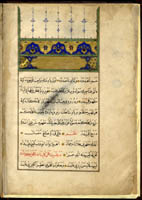 |
Ms Török F. 57 Tarih-i Üngürüs The perhaps most valuable Turkish manuscript of the Oriental Collection was discovered by Vámbéry, and in 1860 donated by him to the Academy. The unique work bears the title Tarih-i Üngürüs (History of Hungary). The work was first presented by Vámbéry himself (Akadémiai Értesítő, 1860, 261–316), later József Budenz informed the Learned Society about the value of the manuscript, appreciated by him like this: “Mr. Vámbéry has enriched the Library of the Hungarian Academy with a work undoubtedly valuable both to the historian and the linguist, when he sent to us the beautiful manuscript of the unique Turkish-language Hungarian chronicle, the Tarih-i Üngürüs.” 1 The frontispiece of the manuscript shows the possessor’s note both in Hungarian and in Turkish, in the latter using his Muslim given name (Reshid), like this: Min kutub-i Reshid al-Üngürüsi, that is, “From the books of Reshid, the Hungarian”. The modern critical edition of the chronicle was prepared by Professor György Hazai, and later its facsimile edition was also published. 2 Research has pointed it out, that the author of the chronicle was a Jewish merchant, Sebold, son of Jacob von Pibrach, who got to the Ottoman court in unclear circumstances (probably as a prisoner of war), and the having converted to Islam, he was raised to a high rank as the interpreter of Suleiman (1520-1566). The author, who calls himself Mahmud Terdzhüman, admits to have used only one Latin source, but critical research has pointed out, that certain parts of the Pictorial Chronicle and the Hungarian chronicle of János Thuróczy both served for sources of the work, which was transformed and completed in several places. The author combined the work with a section describing the deeds of Alexander the Great, as a parallel to the military glories of Suleiman, conqueror of Hungary, since Alxander (Iskander) is an outstanding figure of the Persian and Muslim tradition, as well as a Persian imperial ideal. István Borzsák has pointed out, that the source of this section was the historical work of Marcus Iustianus Iustinus. 3 |
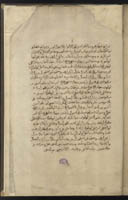 |
Ms Török F. 66 Copies of Turkish and Latin documents |
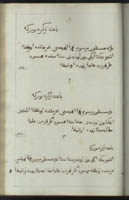 |
Ms Török F. 67 Colligate of Turkish and Latin texts |
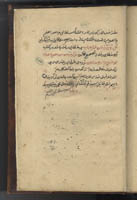 |
Ms Török F. 70 Mirac-i Mustafa The Eastern Turkic version of Mollah Kabil Seyyed’s mystical Remtinekli. The translator was Seyyed Mollah Muhammed Halim. |
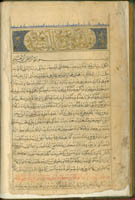 |
Ms Török F. 71 Ferec bad eş-şidde Another exceptional item of Vámbéry’s manuscripts, the fable collection Feredzh bad esh-shidde, that is, “Joys after sorrow”. This genre, which akin to the Thousand and One Nights, is widespread in the Anatolian Turkish folklore, its origin can be traced back to the Arabic fable tradition. The forty-two short stories, different in content, are connected by their common end: in each of them an unexpected, wonderful turn brings solution for the actors in a hopeless situation. 4 Several manuscripts of this work are known worldwide. The Oriental Collection has eight copies, seven of which are from Dániel Szilágyi: Török O.6 and O.10 (originally one work in two parts, cf. Csorba – Sudár, 2003a, 132), O.33, Qu.3, Qu.4, Qu.5, F.48. This manuscript of Vámbéry was copied by Hasan bin Muhammed el-Fumeni. Its exceptional value comes from its age: the manuscript, copied in 1451 in Edirne, is the oldest copy among the manuscripts known today. In addition, this work is also uniquely valuable from the point of view of language history, as an early written record of Ottoman Turkish language. |
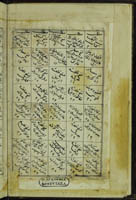 |
Ms Török F. 23 Hoca Mehmed Saadeddin: Tacü’l-tevarih The Oriental Collection preserves three copies of the 16th-century Turkish chronicle by Hodzha Sadeddin (Sadeddin Mehmed 1536/37-1599) (also Török Qu. 34 and Török F. 54). The author comes from an Iranian family established in Istanbul, a student of the famous Istanbul seyhülislam (chief mufti) Ebuʻs-suud. As the tutor of Sultan Murad III (1574-1595) and later as a seyhülislam he had an unmatched influence in the leadership of the Ottoman Empire. During the fifteen-year war, in the Battle of Mezőkeresztes (1596) it was mainly due to him that the losing Ottoman army did not break up. In 1598 he completed the chronicle “The crown of stories”, dealing with the period of the Ottoman Empire until the reign of Suleiman I (1520-1566). This manuscript was copied in 1609 by Mustafa ibn Iskender, and Vámbéry donated it to the Academy in 1858. |
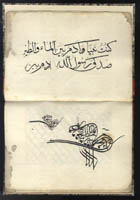 |
Ms Török Qu. 39 İnşa-i mergub A collection of letters from 1812. |
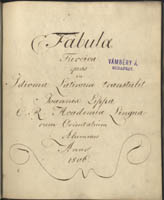 |
Ms Török Qu. 60 Fabula Turcica Educative fables in Latin and Turkish. Written by a European hand in the 18th century. |
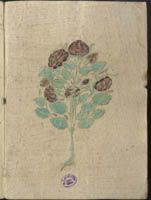 |
Ms Török Qu. 63 İnşa-i mergub |
 |
Ms Török Qu. 64 İnşa-i mergub An anthology compiled by a certain Ismail. Some parts are followed by a commentary. |
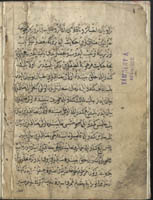 |
Ms Török Qu. 65 Letaif-i Nasreddin hoca A collection of the popular, witty stories of Nasreddin Hodzha. |
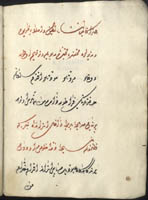 |
Ms Török Qu. 66 İnşa-i latif A collection of calligraphic writings. |
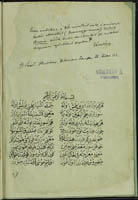 |
Ms Török Qu. 67 Musa Abdi: Camasb-name The flyleaf of this manuscript containing the 15th-century poem of Musa Abdi, has a note by Vámbéry: “I got this ancient Ottoman poetic narrative (Dzhamasp-nameh) on my 70th birthday from my erudite Turkish friend Nedzhib Aasim. Vámbéry”. |
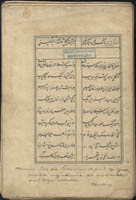 |
Ms Török Qu. 68 Muhammad Salih: Şeybanî-name A chronicle in verses on the deeds of Khan Sheibani (1451-1510), the founder of the 16th Uzbek Sheibanide dynasty, by Muhammed Salih (died in 1535). |
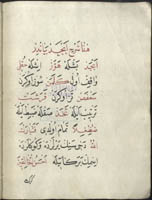 |
Ms Török Qu. 69 Şerh-i ebced |
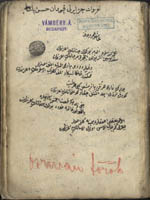 |
Ms Török Qu. 70 Gazavat-i Cezayirli Hasan paşa |
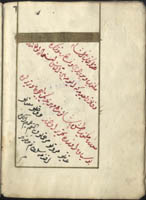 |
Ms Török Qu. 71 İnşa |
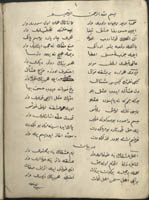 |
Ms Török Qu. 72 Fazil efendi: Huban-name |
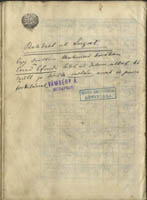 |
Ms Török Qu. 73 Mehmed Esad: Behcetü’l-lugat |
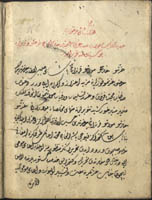 |
Ms Török Qu. 74 İnşa-i mergub Sample letters for formal letter writing. |
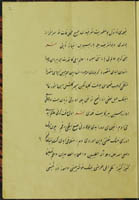 |
Ms Török Qu. 75 Muhakemetü’l-lugateyn Ali Shir Nevai’s (1441-1501) famous collection of words, in which he asserts the superiority of the Turkish language over Persian |
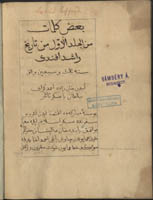 |
Ms Török Qu. 76 Tarih-i Raşid This Turkish chronicle by two Ottoman court historian, Mehmed Rashid (died 1735), and Ismail Asim Chelebizade (1685–1760) deals with the period of the Ottoman Empire between 1655 and 1728 |
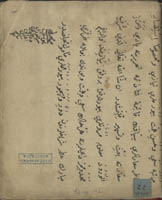 |
Ms Török Qu. 77 İnşa A collection of letters written by several hands. |
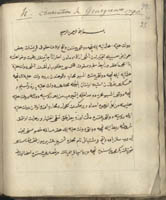 |
Ms Török Qu. 78 A colligate of excerpts in German and Turkish |
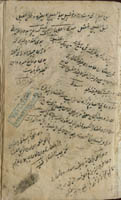 |
Ms Török O. 38 Muhammed Bahadır Han: Kitab-i menafi-i hayavanat A medical treatise divided in three parts, written in Eastern Turkic |
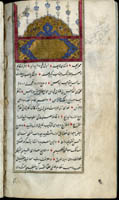 |
Ms Török O. 171 Kadızade Şeyh Muhammed: Kitab-i makbul fi halü’l-huyul This prosaic treatise, dedicated by the author to Sultan Ahmed III (1703-1730) deals with horses. The copier of Vámbéry’s manuscript was a certain Esad. |
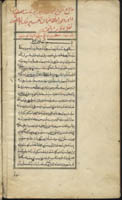 |
Ms Török O. 176 Tevarih-i futuh-i Şirvan Chronicle of an anonymous author on the Caucasian campaign of 1578 of Grand Vizier Lala Mustafa (died 1580). This manuscript was copied by Mustafa Salim Abdullah |
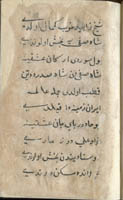 |
Ms Török O. 196 This work in Central Asian Eastern Turkic, incomplete at the beginning and at the end, contains stories in verse |
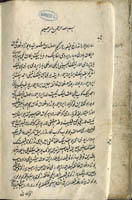 |
Ms Török O. 329 [Hikaye-i Yusuf bek] A folk tale in Eastern Turkic. Incomplete manuscript. |
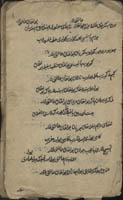 |
Ms Török O. 370 A collection of poems in Eastern Turkic and Persian |
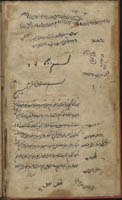 |
Ms Török O. 371 Mahbubü’l-kulub A late (1818) copy of Ali Shir Nevai’s (1441-1501) collection of moral counsels (nasihat literature) |
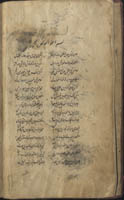 |
Ms. Török O. 372 Ferüdüddin Attar: Tercüme-i Mantiku’l-tayr A Turkish translation of Feridüddin Attar’s (?-1221) symbolic poem, originally written in Persian |
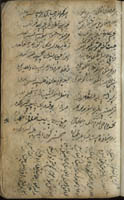 |
Ms Török O. 373 A collection of poems in Eastern Turkic, without title The flyleaf of this manuscript, brought by Vámbéry from his Central Asian journey, originally had this possessor’s note: “I have taken out this manuscript from a Turcoman robber’s bootleg. Vambéry.” |
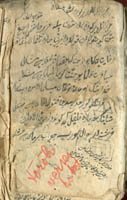 |
Ms Török O.374 Divan-i hikmet Religious poem by Hodzha Ahmed Yesevi (1093-1166), with which he wanted to promote the Islamization of the Turks. The author is also the name-giver of the mystic syncretist tendency founded by him. |
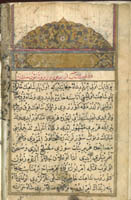 |
Ms Török O.375 Kırk vezir ve Hatun sultan hikayesi This manuscript contains a late (18th or 19th-century) version of the two popular fables |
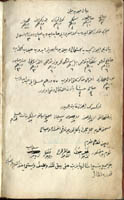 |
Ms. Török O. 376 Tarih-i Nişancı This copy of a 16th-century Turkish chronicle, containing also passages related to Hungary, was copied in 1673 by Abdullah bin Mustafa. |
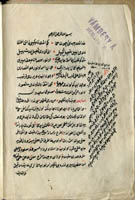 |
Ms Török O. 377 Şerh-i muamma Commentary of Hüsein bin Muhammed el-Hüsein to Ali Shir Nevai’s (1441-1501) work containing riddles and enigmas. |
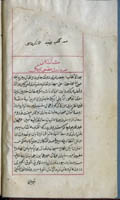 |
Ms. Török O. 378 Münşeat-i Kanî The collection of letters of Kani efendi (died 1791) was composed in 1809 by Mustafa bin Muhammed Sadik. |
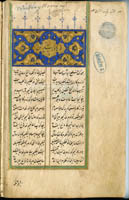 |
Ms. Török O. 379 Ferhad ve Şirin The love story of Ferhad and Shirin became popular with the mesnevi of the 15th-century poet Ali Shir Nevai (1441-1501). The famous fable was a variation (nazireh) of Khosrev and Shirin, the work of Nizami (1141-1209) and Emir Khosrev (ca. 1253 – 1325) |
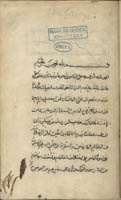 |
Ms Török O. 380 Hulasa-i Abbasi This copy of Muhammad Huvayyi’s (Hoyi’s) dictionary was copied in 1619. |
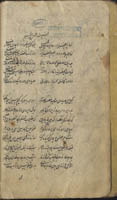 |
Ms Török O. 381 Tahir ile Zühre A story in Eastern Turkic, based on a religious folk tradition. |
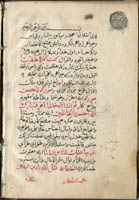 |
Ms. Török O. 382 Tarih-i Subhî The Turkish chronicler Subhi Mehmed (ca 1711 – 1769) was court historian between 1739 and 1745. This work about the events of the 1730s and 1740s is an especially valuable source of the Hapsburg-Turkish wars of 1736-1739, in which Subhi personally took part. The prestige of this work, providing detailed information about the official events in the respective period (appointments, dismissals, other biographic notes) is further increased by the fac, that on several occasions Subhi used original documents. |
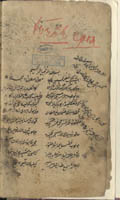 |
Ms Török O. 383 Stories on Prophet Mohammed These stories on Mohammed and his companions were translated from Persian to Eastern Turkic. |
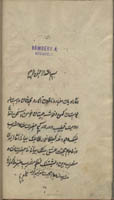 |
Ms Török O. 384 Divane Meşreb The narrator of this prosaic story in Eastern Turkic is Mesreb Shah. |
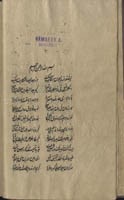 |
Ms Török O. 385 Mebde-i nur Mystical poems (mesnevi) by an unknown author. At the end of the work a short description of Sufism is included. According to the note on the flyleaf, the manuscript was offered as a gift by W. Nalivkine to Vámbéry. |
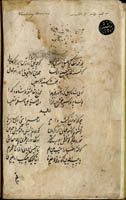 |
Ms. Török O. 386 Abuşka lugatı This Chagatai-Turkic reader’s dictionary was named after its first word. Vámbéry published its Hungarian edition in 1862. The Oriental Collection preserves three further copies (Ms. Török O.321, O.354, O.361.). |
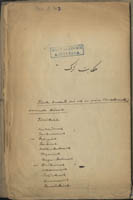 |
Ms Török O. 387 Hikayet-i Türk A collection of fables written in various Turkic languages, copied by Vámbéry. |
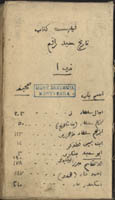 |
Ms Török O. 388 Kitab-i Tarih-i Seyyid Rakim A 15th-century Turkish chronology |
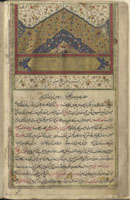 |
Ms Perzsa O. 43 Lutf Alibeg Adar: Ataąkadah |
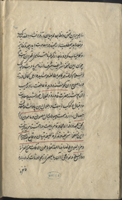 |
Ms Perzsa O. 44 Muhammad Yusuf Munąī: Tārīh-i Muqīm hānī |
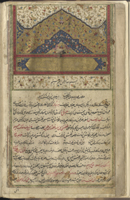 |
Ms Perzsa O. 45 Imānī: Badāīʿ al-luġat |
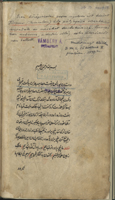 |
Ms Perzsa O. 46 Tārīh-i vafāt-i mahr-i Timur |
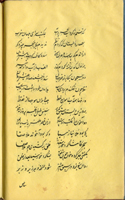 |
Ms Perzsa O. 47 Mirzā Muhammad Sādiq Munąī Ğāndārī: Dakhma-yi ąāhān |
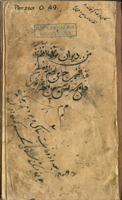 |
Ms Perzsa O. 49 Nūr ad-Dīn ʿAbd ar-Rahman Ğāmī: Min dīvān-i Ğāmī |
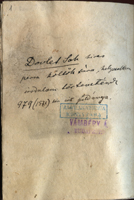 |
Ms Perzsa O. 50 Daulatąāh bin ʿAlā’ ad-Daula Samarkandī: Tadkirat aą-ąuʿarā’ |
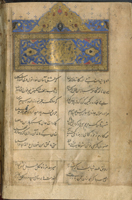 |
Ms Perzsa O. 52 ©ams ad-Dīn Muhammad Hāfiz: Dīvān |
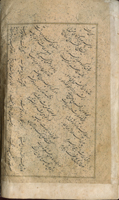 |
Ms Perzsa O. 53 A collection of various Persian poets from 1758 |
 |
Ms Perzsa F. 14 Mahmūd Mirzā Qāğār: Mağmaʻ-yi Mahmūd |
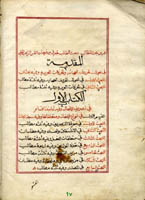 |
Ms Arab O. 4 Ğirmānūs Farḥāt (1081-1145/1670-1732): Baḥṯ al-maṭālib wa-ḥaṯṯ al-ṭālib / li-Ğibrīl ibn Farḥān al-Ḥalabī |
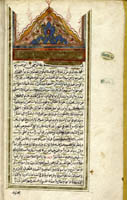 |
Ms Arab F. 4 `Abd Allāh ibn `Umar al- Bayḍāwī (?-685/1286): Anwār al-tanzīl wa-asrār al-ta’wīl |
